” When i asked myself after the presidency how could i have an impact. When i asked myself after…turning 56. It’s not too late you can still have an impact.” This question doesn’t come from just any early retiree but from he who, not so long ago, was president of the number one world power. Barack Obama organized the first meeting of the Chicago Youth Leadership Summit of the newly created Obama Foundation, on October 31st. In so doing, at a major hotel, in front of a handpicked audience, that I was part of, he marked his grand return to the public stage. Five hundred of what are considered to be civic leaders eagerly took in the speech of the former undeniably relaxed American President. Among the activists chosen by the staff of the Obama Foundation from over twenty thousand applicants, four hundred were from the US and one hundred from sixty other countries. Bernadette Meehan, International Director of the Foundation, former diplomat in the Obama Administration, supervised the selection of participants. I was surprised to be the only attendee from France, my name having been proposed by the leadership program European Young Leaders. And my statement was chosen to introduce the opening video of the Summit.
Barack in the gym
Arriving in Chicago, the political birthplace of Barack Obama, I felt like I was attending a UN conference dedicated to activism. I rode from the airport with Asmaa Abumezied, a Palestinian woman who worked with the NGO Oxfam to improve the economic autonomy Gaza Strip residents. Checking in at the hotel, I ran into the Zambian dancehall singer and rapper, B Flow, a global anti-AIDS ambassador. He enthusiastically recalled the 2015 Barack Obama speech when he paid homage to B Flow’s use of music against violence done to women. The next morning, I went down to the gym, my eyes unfocused, running along a path with no destination when my treadmill daydreams were interrupted by none other than Barack Obama himself, who had come to do his morning exercise routine under the watchful eye of his trainer.
Train the successors
At breakfast, Ozan Yanar, originally from Turkey and elected at the age of 27, self-described as the “only immigrant in the Parliament of Finland” – invited me to join his conversation with Kirsten Bosbol, ex- Danish Environment Minister. Seated not too far from us was Dani Laurence, Hungarian refugee who grew up in Switzerland, and founder of I Am Your Protector, a campaign to solve conflicts between communities, in situations ranging from harassment to violence. Marco Gualtieri from Milan, reflecting on fighting famine, explained how technology can facilitate food production. Marko Gregovic brought up the NGO he created, Brodoto, to promote fair tourism practices in his country, Croatia. All these activists went through extreme vetting, being chosen by the Obama Foundation from among thousands of applications! The goal? To train the next generation of leaders who will guide social change. Accompanied by his wife, Michelle Obama, and armed with his legendary charm, he sincerely believes: “Ordinary folks who are active in their local communities can accomplish extraordinary things if given the chance.” And to inspire this potentially extraordinary generation, the Foundation went all out.
Soft cool power
A succession of speakers from everywhere, beginning with Matteo Renzi the former President of the Italian Council of Ministers to Prince Harry… Away from the main stage breakout sessions covering subjects from women in spheres of power to sensitizing young people about human rights causes, as well as the entrepreneurial ecosystem in emerging markets. Moderating the sessions were well known faces such as actor, Rashida Jones, Quincy’s daughter and TV star.
Among the activists, were also upcoming committed stars such as Young Paris, signed by Jay Z’s label, Emmy winning actor and screenwriter, Lena Waithe (Master of None) and political commentator, Sally Kohn, all paying close attention. Although he has retired politically, Barack Obama seems intent on remaining present. He can certainly count on these young minds, many of whom will become leaders of non-profits, businesses or politics. All in all, nothing new, soft cool power is an old family recipe of American leaders.
Translated by Alberta Wilson
]]>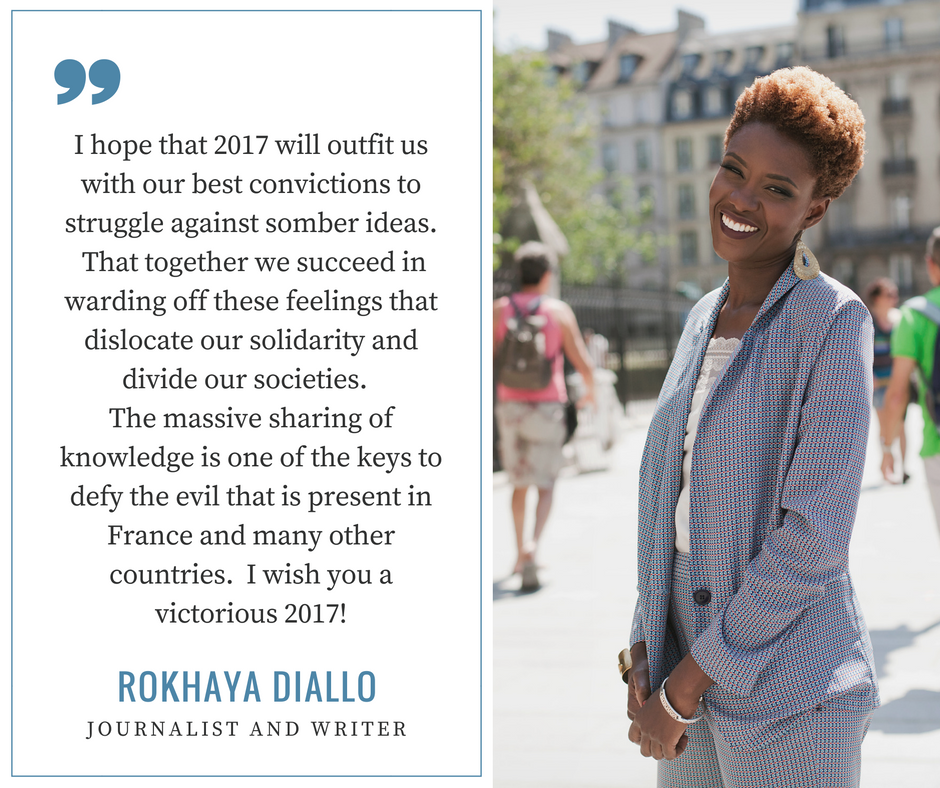 ]]>
]]>How do you deal with the fact of not fitting to the norm? When you’re black and live in a world designed for men and white people? When you don’t look French enough although you feel every inch Parisian? How do you make the world acknowledge who you are?
THE VIDEO IS BELOW
]]>
Adama Traore was a Black man.
While the eyes of the world have been riveted on the United States where in the same week, two Black men, Alton Sterling and Philandro Castile died at the hands of policemen, the death of a French Black man in similar circumstances does not seem to provoke the same reaction. In the political sphere, the voices of extremists were heard spouting their nauseating gall in condemnation of truth-seeking demonstrators.
Tous unis avec nos policiers qui font face à la haine des émeutiers-délinquants de #BeaumontSurOise.
— Marion Le Pen (@Marion_M_Le_Pen) July 20, 2016
#BeaumontSurOise Soutien aux forces de l’ordre et à la population face aux racailles !
— Florian Philippot (@f_philippot) July 20, 2016
Artists and everyday citizens are the ones who sent messages of solidarity to the family.
On perd encore un Frere Adama Traoré paix à son âme que la terre lui soit légère #Persan #BeaumontSurOise bon courage à la famille
— #SONSOFAFRICA (@Mokobe113) July 20, 2016
Toutes mes prières pour Adama Traoré, toutes mes pensées pour ses proches. Que justice soit faite en sa mémoire. Qu’il repose en paix.
— Omar Sy (@OmarSy) July 21, 2016
Most of the media coverage has come from activists on the ground.
“Où sont les médias ? Pr parler des voitures brûlées y a du monde mais pour le reste y a personne”#BeaumontSurOise pic./woTnoJlwTJ
— Sihame Assbague (@s_assbague) July 20, 2016
La gendarmerie est sortie et a gazé et matraqué tout le monde sans sommation.
#BeaumontSurOise pic./B5oW6FltKq— Sihame Assbague (@s_assbague) July 20, 2016
And when the media does mention this tragedy, the racial aspect is systematically omitted. Why keep the evidence quiet?
Adama Traore was a young Black man who lived in the inner city.
Undoubtedly, this cost him his life. In France, this description corresponds to the profile of those unfortunates who lose their lives each year during or following a police intervention; this has been denounced by Amnesty International for several years.
In our country where the racism of American police are promptly denounced for being racist, I am stunned by this incredible ability to omit the obviously racial aspect of this kind of tragedy when it occurs on our soil.
A few days after marching in New York by the sides of my #BlackLivesMatter comrades, I note with immense sadness that once again in France as in the US, racism shows itself to be the product of a system that needs urgently to be dismantled.
Justice for Adama!
Translated by Alberta Wilson
]]>Written by actress, Danai Gurira (seen in The Walking Dead and Mother of George, Andrew Dosunmu’s dazzling film) and directed by Liesl Tommy, the play tells the story of the Liberian Civil War from the perspective of five women.
After its successful run at the Public Theater, the play opened at the Golden Theater. Not only is this the first time in Broadway history that women entirely run a production, but it is run by Black women. This season, it is also the only new play written by a woman.
Oscar winner Lupita Nyong’o is a member of the remarkable cast, in the lead role but the other talents are impressive as well: Pascale Armand, Akous Busia, Zainab Jah and Saycon Sengbloh.
The powerful script is well rendered by the impeccable interpretation of these women that we would love to see more often and on the big screen.
If you are in New York or are just passing through, I recommend you see it!
Translated by Alberta Wilson
]]>During a stopover in Palo Alto, I took a side trip to Stanford where the African and African American Studies Department was hosting its annual St. Clair Drake Memorial Lecture.
The guest speaker was Nate Parker, first seen a few years ago with Denzel Washington in The Great Debaters. He came to screen his first full-length film and present his militant stance with strong and unequivocal statements.
Referring to the permanent “state of emergency” in America, he cited the murder of young Mike Brown in Ferguson, the prison system that disproportionately jails Blacks and concluded with his long-time hero, Nat Turner.
Nat Turner is the main character of The Birth of a Nation. His name may be relatively unknown in France but he is by no means a fictional character. This slave, a hero of the Black struggle, organized a slave uprising in 1831. Nate Turner’s film tells the story of that bloody uprising.
The title of the film deliberately echoes the D.W. Griffith movie, well-known for its depiction of the abject state of the racist ideology that flourished in the U.S. at that time. To ensure that his film would be seen by the greatest number of viewers, especially high school students, Nate Parker refused Netflix’s financially attractive offer to finally settle with Fox Searchlight.
Like most of those at the conference, I was impressed by the powerful presentation of this committed actor whose sharp reserve is more remiscent of media personalities.
Let’s hope this film will shake up the white consensus that has pervaded the Oscars for the past few years and obtain its due in the 2017 ceremonies.
]]>Traditionally, the ceremony is held in February, Black History Month. But snowzilla hit, pushing it into March. BET HONORS began in 2008 to recognize African Americans who excel in such varied fields as business, entertainment, film or public service.
This year’s awards went to:
Lee Daniels (TV and Film) – Director of The Butler, among others and creator of the hit TV series, Empire; Eric Holder (Public Service) – former US Attorney General; Mellody Hobson (Corporate Citizen); Patti LaBelle (Music Arts) – iconic singer with over 50 million albums sold worldwide; L.A. Reid (Excellence in Entertainment) – CEO of Epic Records who launched the careers of several musical talents, such as Jermaine Jackson, P!NK and Outkast.
Honoring them, a slew of celebrities whose lives and careers they touched, took to the stage. Among them were Toni Braxton and Usher, discovered by L.A. Reid, Jussie Smollet, star of the series, Empire, created by Lee Daniel, Janelle Monae, acknowledging the advice she got from businesswoman, Mellody Hobson and Monica Brown, still floored by Patti LaBelle’s astounding talent.
I was privileged to interview the honorees and those closest to them. You can see it all on BET this Sunday.
The host for the evening was Arsenio Hall (Coming to America, Harlem Nights, Black Dynamite) and it took place in the famous Warner Theater in Washington D.C., not only the US capital but the historically Black city where Martin Luther King, Jr. made his immortal I have a dream speech – the dream to see all talents recognized with racial distinction.
]]>My first favorite was the mistress of ceremonies, Florence Foresti and her immense burgundy velvet bow tie.
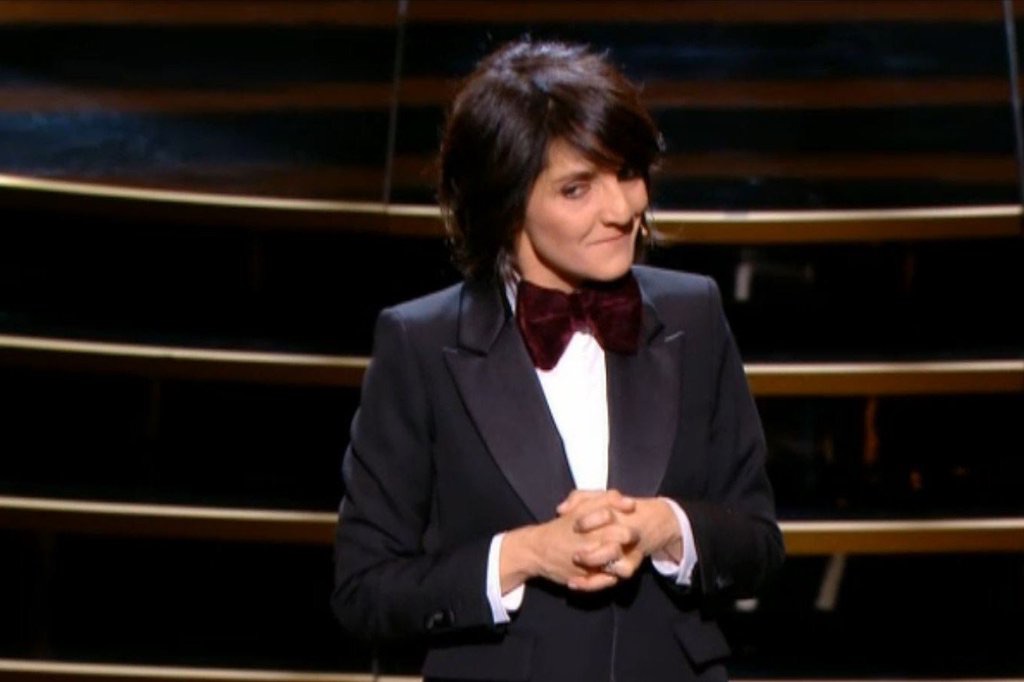
Our super MC’s humor was at the root of her smashing entrance, worthy of the best blinged-out rappers. Puff Daddy and Kanye West, go get dressed.
Florence Foresti wears the pink fur coat from “On aura tout vu” better than anyone.
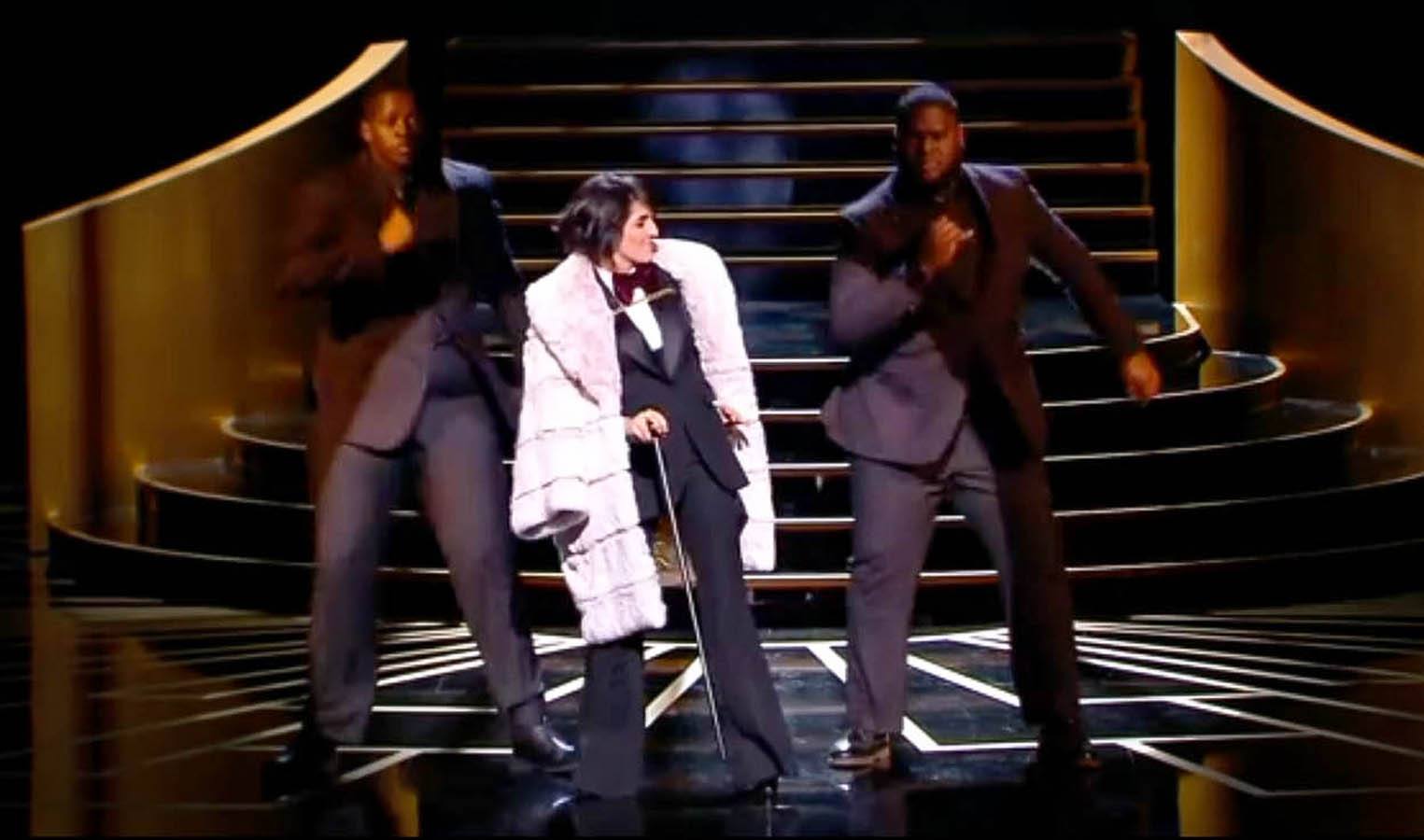
Many actresses went for the simplicity of black, a sure thing on the red carpet, whether a dress or a tuxedo. A few pulled off French elegance, a homage to classic Parisian style. The famous “less is more” so envied by our friends on the other side of the Atlantic, where nothing is over the top and everything breathes refinement straight from the source like Melanie Laurent in Saint Laurent or Carole Bouquet, icon of French chic. Let’s not forget Juliette Binoch wearing a Roberto Cavalli and Chopard jewels.


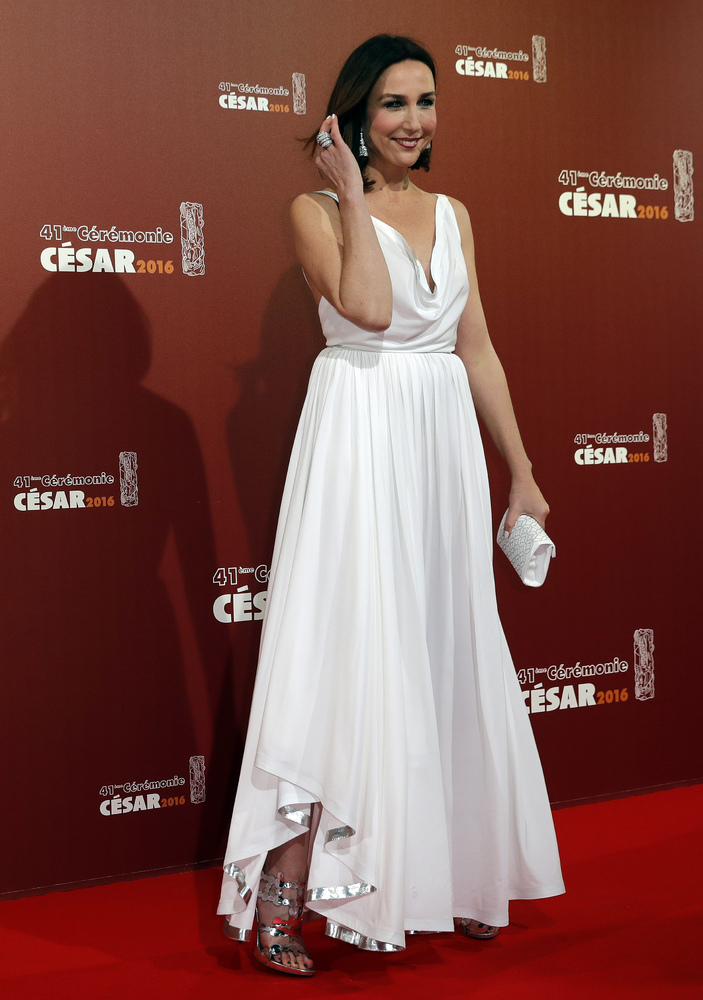
Legend: As for me, I had the enormous honor of dressing the beautiful and talented Deborah François, who presented the Cesar for the best photography. Both of us want delicacy and poetry. We want to thoroughly play the Red Carpet game by choosing a cinema look that will make movie-goers dream. We immediately decided on a marvelous Haute Couture dress, corseted and powdered, by Alexis Mabille<http://www.alexismabille.com/. Our make up choice imitated the immortal star Rita Hayworth’s look.
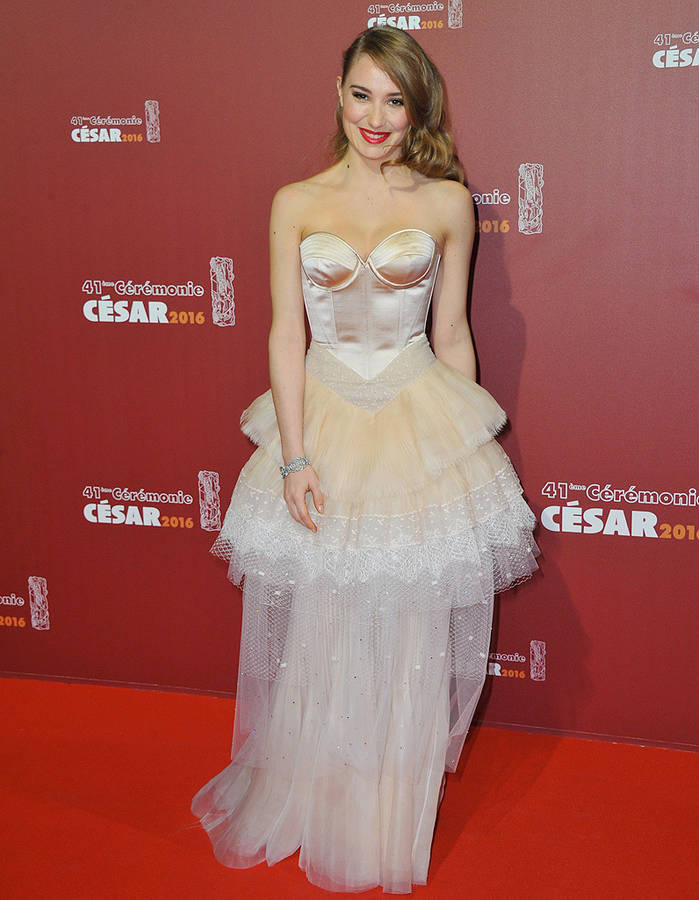
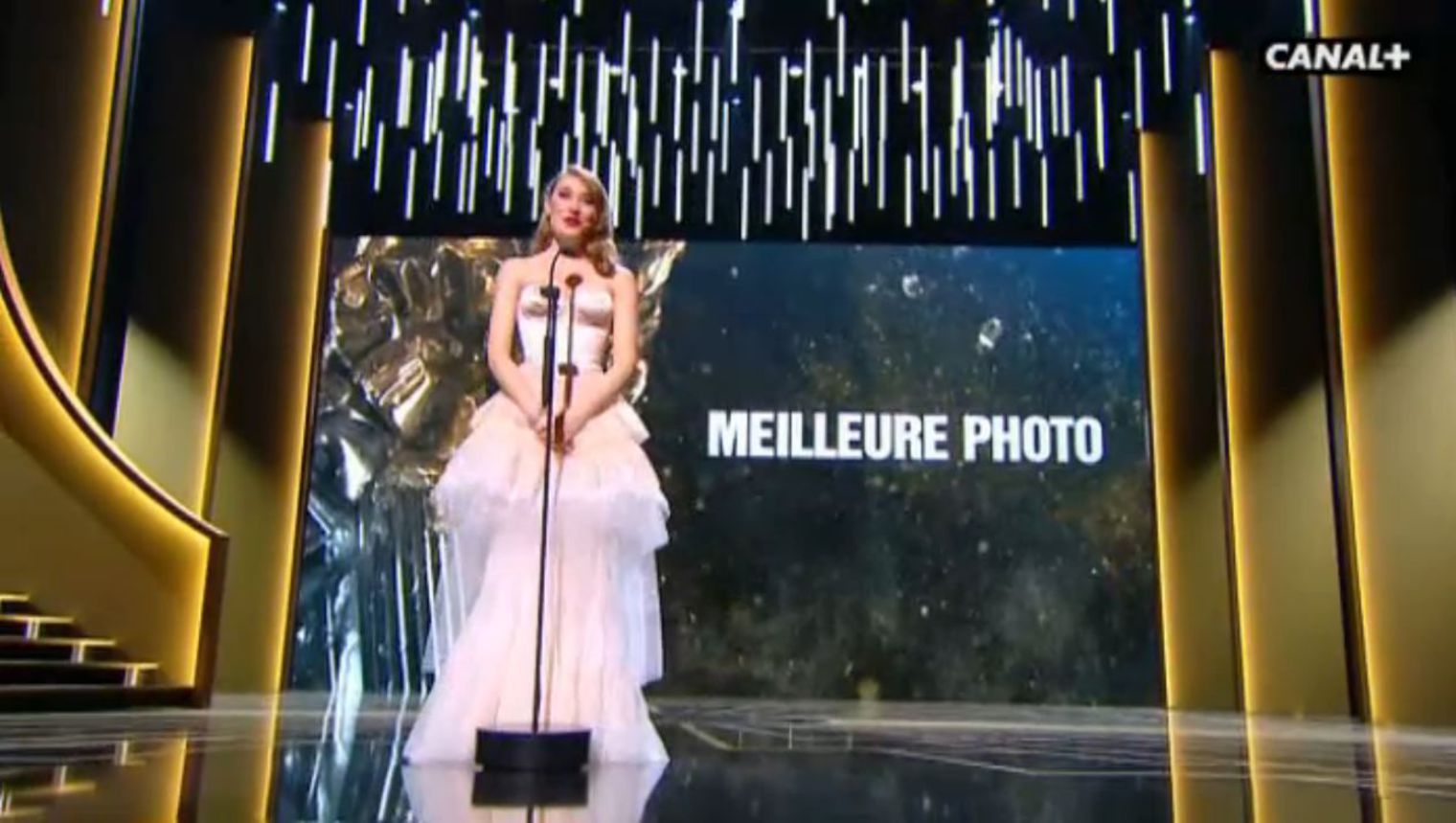
Legend: Our final shout out to those who dared to stand out, like the pretty Karidja Toure in a short black and silver outfit, distinguished by its freshness. The ravishing Audrey Chauveau made a marvelous choice for the Red Carpet, a long lamé dress.
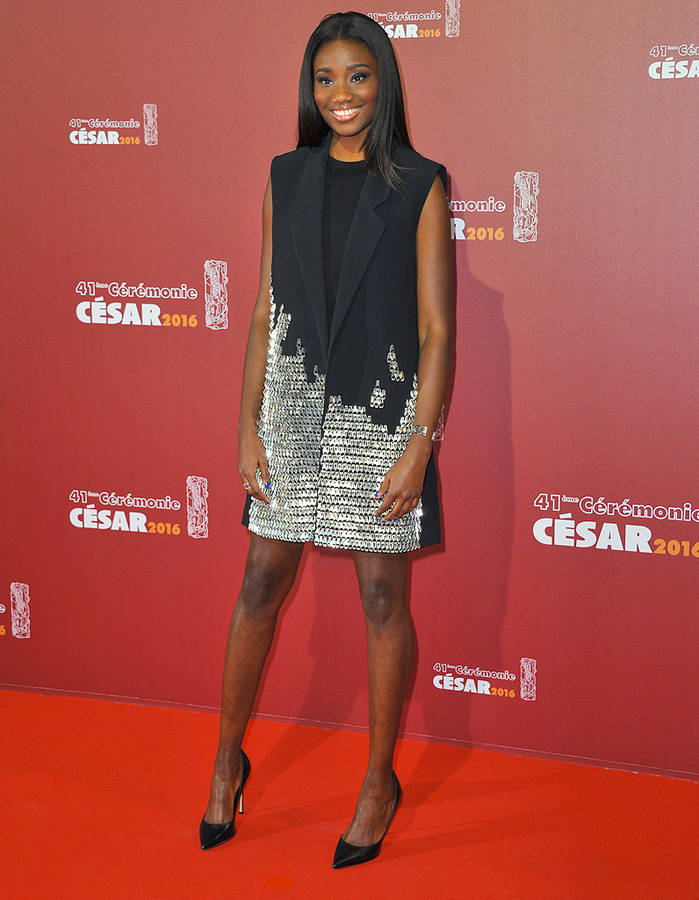
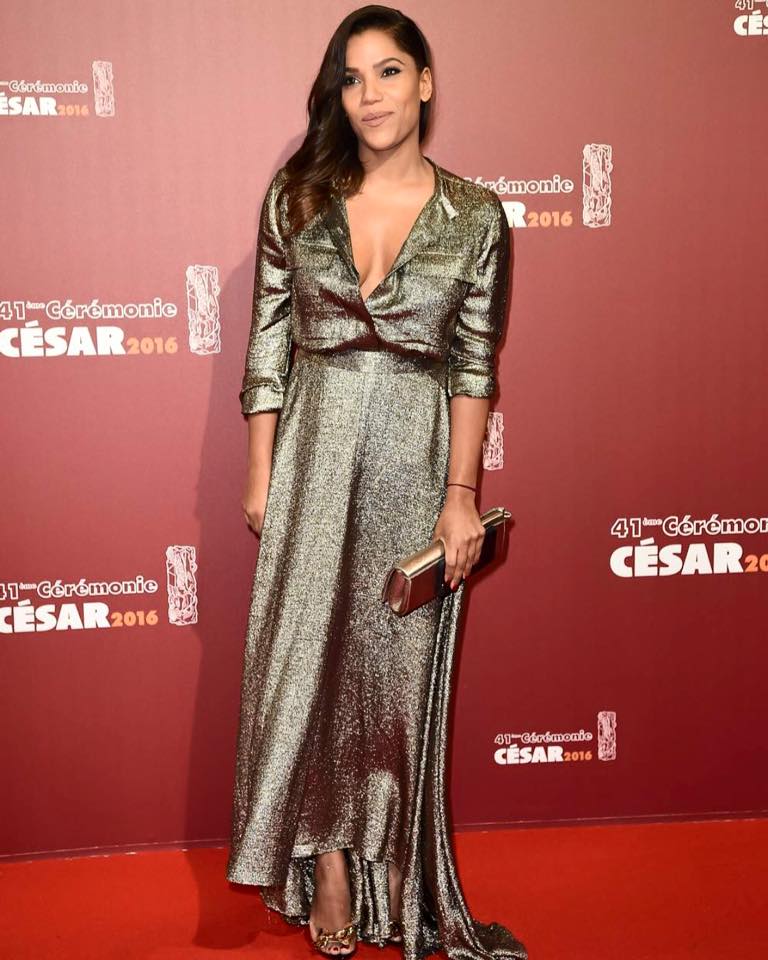
Our next style post of course will be from the Oscars. Following their best looks, we’ll see how the Americans shone on the Red Carpet.
Gayanée PIERRE*, Le Choix du Style
Translated by Alberta Wilson
* Gayanée PIERRE is a French fashion professional. She lives and works in Paris. Follow her on Instagram and Twitter.
]]>The performance opens up on a jail-like setting, four cells in which black men are locked up. One of them played a melancholic melody on the saxophone: the sound of Terrace Martin. You could also see black men out of these jail cells, in chains and shackles, walking up the stage in rhythm, led by the artist himself. At a time when black artists are seriously considering boycotting award shows due to the lack of diversity, Kendrick Lamar caused quite a stir by performing “The Blacker the Berry”, in a set that brings to mind middle passage of the slave trade. By staging such a painful chapter of American history, he chose to shine the spotlight on the black narrative and reclaim it on prime time National television. The jail décor echoed the slavery imagery embodied by the chains and shackles, suggesting that the mass incarceration of black males is a form of modern day slavery, with inmates’ underpaid labor benefitting big corporations.
Slavery imagery suggesting mass incarceration
The verse he chose to perform depicts quite a few stereotypes assigned to black men, “the bottom of mankind”, and the racial animosity that has been expressed towards coloreds for centuries. His verse is punctuated by the voice of reggae DJ Assassin singing the chorus and chanting: “every race start from the black, remember that”. The chorus comes as a liberation as all prisoners break free from their chains before entering in a dance trance by Krumping and Flexing. Anybody familiar with both dance styles would tell you that Krumping is a style which originated in LA and aims at channeling pain, rage and anger in a constructive way through dancing. Flexing, also known as Bone Breaking, consists in defying your body’s limits by performing extreme contortions. Both involve exorcising some type of pains, whether it is mental or physical.
In this short piece, we witness the display of Hip Hop at its greatest: MC with the chorus by DJ Assassin with a strong black message, Dancing, Graffiti with glow in the dark colors painted on the costumes; the DJ is replaced by a live band for the background music. What if Hip Hop was the last 40+ years’ gospel?
I can’t help but recall his acceptance speech for best rap album just a few minutes earlier, in which after thanking God, his parents, his fiancé, TDE and Top Dawg himself for taking him and his TDE colleagues out of “Compton … to be the best they could be”, he paid tribute to past classic Hip Hop albums and veterans: Ice Cube, Snoop’s “Doggystyle” and Nas’ “Illmatic”. He concluded by the following quote: “we will live forever, believe that”. Quite an ode to an art form which started from nothing.
African-looking village
The next setting is an African-looking village to perform “Alright”. We have everything from drums, dancers in traditional garments to a blazing fire – “next time” (a nod to James Baldwin maybe): back to Roots for a minute. This song seems to have become the hymn of Civil Rights Movement 2.0 all across America, as it was chanted during police harassment protests in Cleveland or during the 20th anniversary of the Million Man March, just to name a few occurrences. This song embodies a cry of hope for a community that has witnessed quite a few atrocities in the past few years. Scratch that, centuries. A new generation of activists can relate to Kendrick Lamar’s music and even use it as chants in a similar way “We Shall Overcome” was a rallying anthem to the African-American Civil Rights Movement.
References to the black struggles
In the last part of his performance, he is alone on stage and performs what seems to be a prayer or a contemplation on the night Trayvon Martin died:
“On February 26, I lost my life too (…) and for our community, do you know what it does? Add a trail of hatred, 2012 was taken from the world to see, set us back another 400 years, this is modern day slavery”. The performance goes full circle; we are back to square with a reflection on what the mass incarceration and killing of back people do to disseminate the black community.
The reality is, Kendrick Lamar’ repertoire contains numerous references to the black struggle: “Martin had a dream, Kendrick have a dream” (“Backseat Freestyle” in Good Kid, M.A.A.D City album. Or even in “HiiiPower” (Section.80” album), where he is referring to Huey P. Newton, Bobby Seale and Fred Hampton, just to name a few.
There is so much to say about this performance. His artwork has rekindled a lifetime conversation for generations to come. The more I listen to his music or watch his performances, the more I keep unfolding layers. Lamar has depth. His catalogue is a solid social commentary in a time where racial tensions and racialized discourse are even more present in the public eye. Mr. Lamar’s rap sparks essential questions within the black community, which leads to instilling pride, while still questioning its flaws. In my opinion, Kendrick Lamar’s latest album is part of the soundtrack of the Civil Rights Movement of this generation. And for this, I thank him.
The revolution is now being televised.
]]>As your network correspondent in the US, I’ll keep you posted on goings-on in the heart of African American culture and will bring you exclusives on the biggest events through reports from New York, interviews and conferences, like for example, the one I took part in at the iconic Apollo Theater in Harlem. I’ll also take you inside the BET Studios in Washington and backstage at the network’s most important ceremonies like BET HONORS, coming up in March.
I’ll tell all about Martin Luther King Day and Black History Month. You will also be introduced to celebrities on a regular basis.
As usual, you can watch me on BET presenting exclusive documentaries.
BET BUZZ – Monday through Friday at 8:10 PM All the lifestyle and celebrity news presented every week by RAPHAL, HEDIA and myself.
LES DOCS INEDITS – every Sunday at 9:05 PM Every week, a new BET exclusive documentary presented by ROKHAYA
]]>